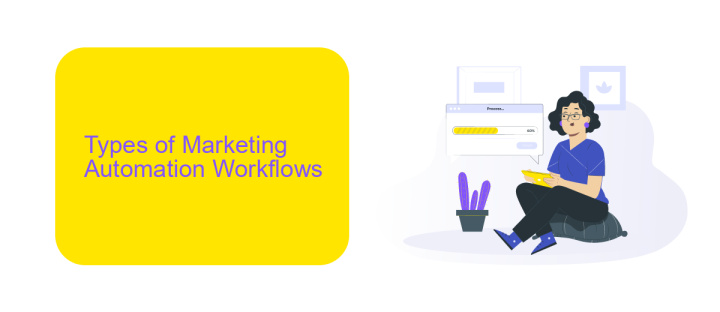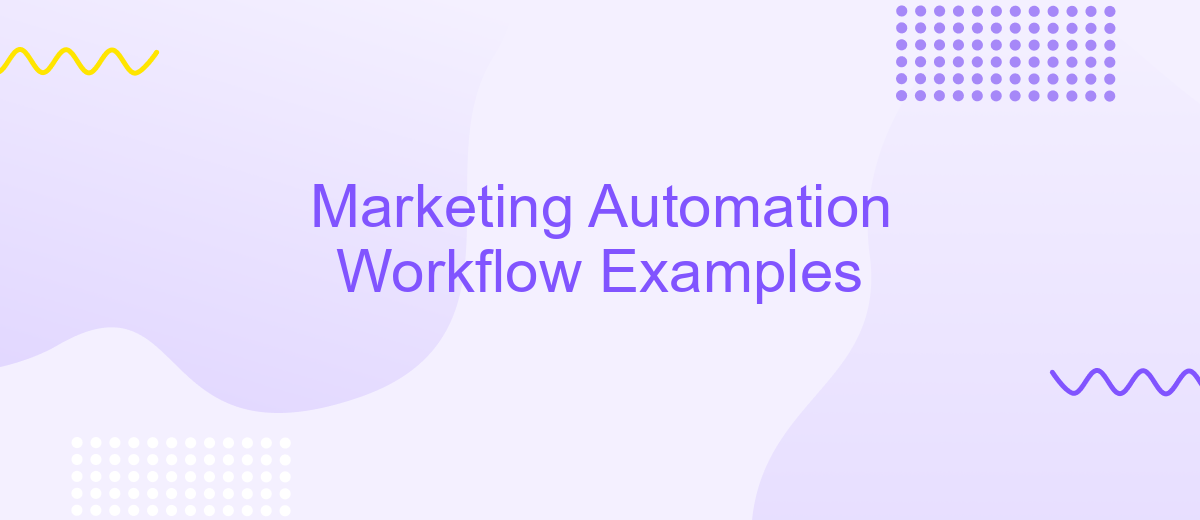Marketing Automation Workflow Examples
In today's fast-paced digital landscape, marketing automation workflows are essential for streamlining processes and enhancing customer engagement. By leveraging automation tools, businesses can efficiently manage campaigns, nurture leads, and drive conversions. This article explores various marketing automation workflow examples that can help organizations optimize their strategies and achieve better results with minimal manual effort.
Introduction
Marketing automation workflows are essential tools for streamlining repetitive tasks and optimizing customer engagement strategies. By automating these processes, businesses can save time, reduce human error, and ensure a consistent customer experience.
- Lead nurturing through automated email sequences
- Personalized customer journeys based on behavior
- Automated social media posting and monitoring
- Sales and marketing alignment with CRM integration
- Data-driven decision making through analytics
Integrating various tools and platforms is crucial for effective marketing automation. Services like ApiX-Drive facilitate seamless integration between your marketing tools, ensuring data flows smoothly across different systems. This integration allows businesses to create more sophisticated workflows, enhancing overall efficiency and customer satisfaction.
Types of Marketing Automation Workflows

Marketing automation workflows come in various forms, each tailored to specific business needs and objectives. One common type is the lead nurturing workflow, which focuses on guiding prospects through the sales funnel by delivering targeted content and personalized messages at each stage of their journey. This ensures that leads receive the right information at the right time, ultimately increasing the likelihood of conversion. Another type is the customer onboarding workflow, designed to welcome and educate new customers, ensuring they understand how to use a product or service effectively. This can involve a series of emails, tutorials, and check-ins to provide a seamless customer experience.
Additionally, there are re-engagement workflows aimed at reactivating inactive customers or subscribers. These workflows often include special offers, reminders, or personalized content to reignite interest. For businesses looking to streamline their processes, integration workflows are essential. Tools like ApiX-Drive facilitate the automation of data transfer between different platforms, ensuring that information flows seamlessly across various systems. This not only saves time but also reduces the risk of errors, allowing businesses to focus on more strategic tasks. By leveraging these types of marketing automation workflows, companies can enhance efficiency, improve customer relationships, and drive growth.
Benefits of Using Marketing Automation Workflows

Implementing marketing automation workflows can significantly enhance your marketing efforts by streamlining repetitive tasks and ensuring consistent communication with your audience. These workflows help in saving time, reducing human error, and increasing overall efficiency.
- Improved Lead Nurturing: Automated workflows allow you to send personalized and timely messages to leads, enhancing their journey through the sales funnel.
- Enhanced Customer Engagement: By automating communication, you can maintain regular contact with customers, providing them with relevant content and offers.
- Efficient Resource Management: Automation frees up your team's time, allowing them to focus on more strategic tasks rather than repetitive manual processes.
- Better Data Utilization: Automated workflows can integrate with tools like ApiX-Drive to seamlessly connect various marketing platforms, ensuring that data flows smoothly and is utilized effectively.
- Scalability: As your business grows, marketing automation workflows can easily scale to handle increased volumes of leads and customer interactions without additional manual effort.
Overall, marketing automation workflows are a powerful tool that can help your business achieve more with less effort. By automating key processes, you can ensure that your marketing campaigns are more effective, targeted, and efficient, ultimately leading to better results and higher ROI.
Examples of Marketing Automation Workflows

Marketing automation workflows streamline various tasks, enhancing efficiency and productivity. These workflows can be customized to fit the unique needs of any business, ensuring that marketing efforts are both effective and targeted.
One common example is the welcome email series, which engages new subscribers with a series of introductory emails. Another example is the abandoned cart reminder, where potential customers are nudged to complete their purchases. Lead nurturing workflows are also popular, guiding prospects through the sales funnel with personalized content.
- Welcome Email Series: Introduce new subscribers to your brand and offerings.
- Abandoned Cart Reminders: Encourage customers to complete their purchases.
- Lead Nurturing: Provide valuable content to guide leads through the sales funnel.
- Re-engagement Campaigns: Win back inactive subscribers with targeted messages.
Integrating these workflows with tools like ApiX-Drive can further enhance their effectiveness. ApiX-Drive allows seamless integration between various marketing platforms, ensuring data flows smoothly and tasks are automated efficiently. By leveraging such integrations, businesses can optimize their marketing strategies and achieve better results.
Best Practices for Marketing Automation Workflows
To ensure the effectiveness of your marketing automation workflows, it is crucial to start with clear objectives and well-defined goals. Identify what you aim to achieve with each workflow, whether it’s lead nurturing, customer retention, or upselling. Segment your audience based on their behavior, preferences, and demographics to deliver personalized content that resonates with them. Regularly review and update your workflows to keep them aligned with your evolving marketing strategies and audience needs.
Integrating various tools and platforms can significantly enhance the efficiency of your marketing automation workflows. Utilize services like ApiX-Drive to seamlessly connect different applications and automate data transfers between them. This ensures that your marketing campaigns are coordinated and data-driven. Additionally, always monitor the performance of your workflows through analytics and A/B testing to continuously optimize and improve your marketing efforts. By adhering to these best practices, you can maximize the impact of your marketing automation strategies.
FAQ
What is a marketing automation workflow?
How can I create a marketing automation workflow?
What are some common examples of marketing automation workflows?
How can I measure the effectiveness of my marketing automation workflows?
What tools can help integrate and automate my marketing workflows?
Apix-Drive will help optimize business processes, save you from a lot of routine tasks and unnecessary costs for automation, attracting additional specialists. Try setting up a free test connection with ApiX-Drive and see for yourself. Now you have to think about where to invest the freed time and money!

